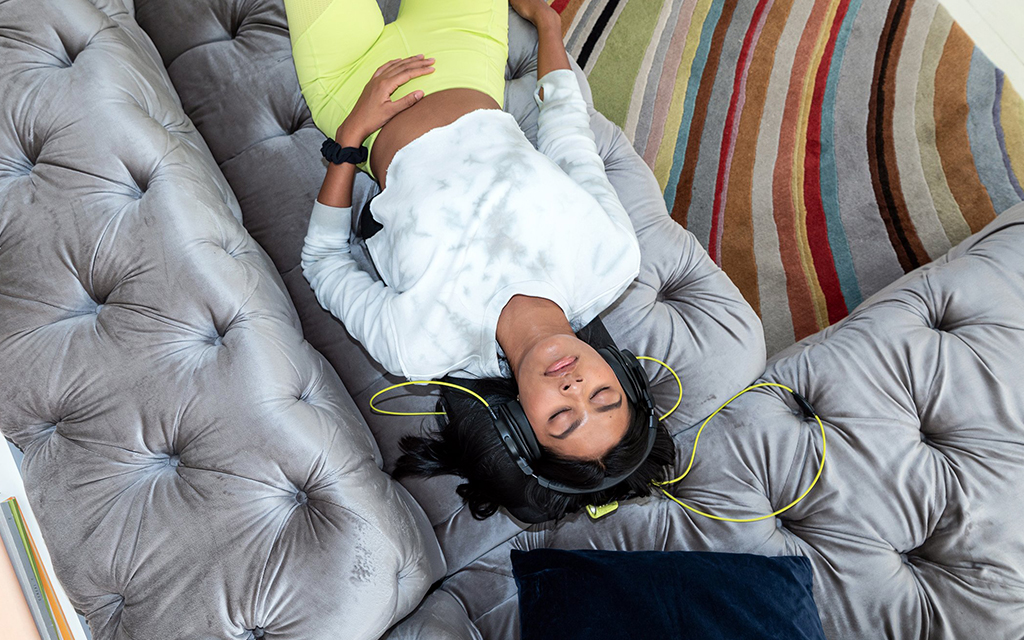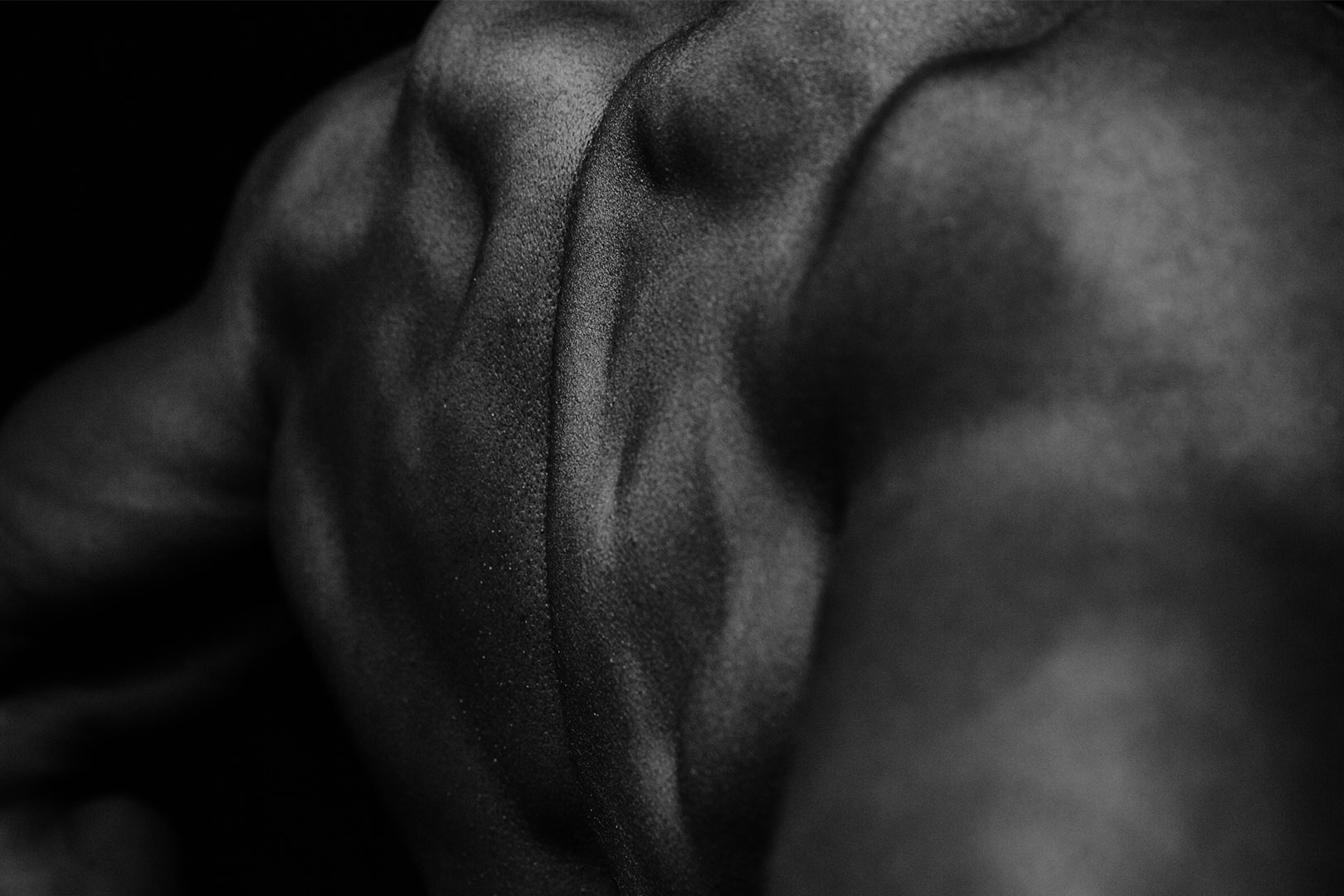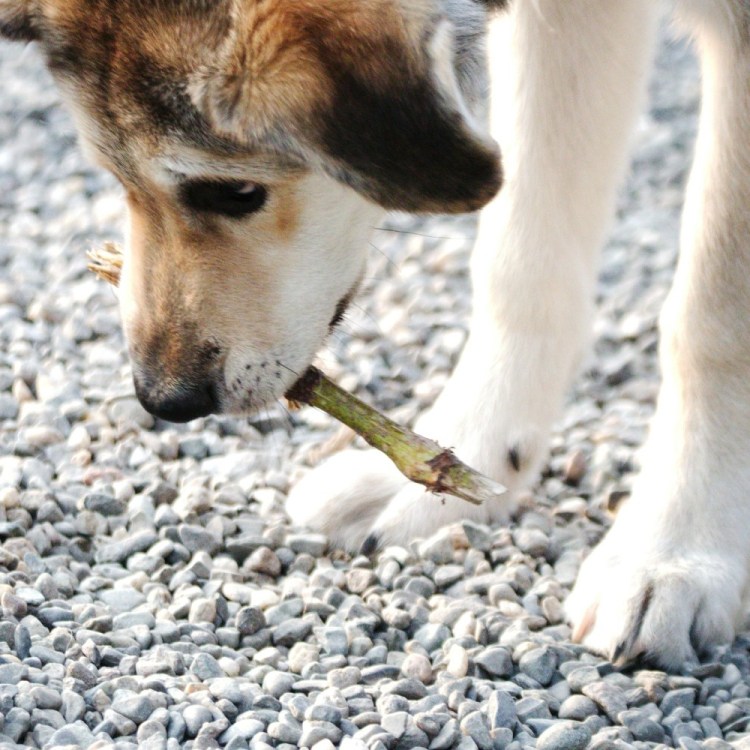Welcome to The Workout From Home Diaries. Throughout our national self-isolation period, we’ll be sharing single-exercise deep dives, offbeat belly-busters and general get-off-the-couch inspiration that doesn’t require a visit to your (now-shuttered) local gym.
A few months ago, I spent a Monday evening at a Roman-style bathhouse in Brooklyn. I was shivering away in a 52°F plunge pool, looking to last just another half minute or so, when I was granted a reprieve. The bath’s attendees, some 25 of us in total, were being herded into the facility’s full-size Finnish sauna, to experience a treatment called Aufguss.
If you’ve never heard the word, don’t worry — very few in North America have. It’s German for “infusion” and refers to a form of multi-sensory sauna entertainment, wherein an Aufgussmeister (or “sauna master”) places snowballs infused with oils on the sauna’s hot stones. As the scented steam thickens the already-dense air, the sauna meister waves a towel around like a master pizzaiolo, diverting it around the room. When it hits your section of the bench, you feel it. The last time I felt heat like that was getting off a small plane on the Phoenix tarmac in the height of summer.
Our meister, whose new-age-y name now escapes me, danced around the room for nearly 10 minutes. I’d never seen anything like it. That’s been a common refrain in the American fitness sphere over the last few years, as gyms have begun to adopt a more active approach to the “recovery” phase of working out, something that has long been the norm in parts of Europe and East Asia.
Aufguss, to be sure, is a novelty. It’s a ritual meant to create thermal shock and secrete adrenaline in the body. The science may not be all the way there (I felt more woozy than euphoric), but its presence at a Williamsburg spa frequented by Brooklyn Nets and New York City FC stars was yet another reminder — on top of running recovery studios and face gyms — that the wellness community is ready to take the minutes and hours after a workout as seriously as the session itself.
But what happens when that community is hamstrung by an indefinite quarantine? How can you simulate the muscle-nourishing effects of a plunge pool or the deep-tissue treatment of a professional massage when everything from Instagram-perfect performance spas to traditional physical-therapy clinics are closed?
Below, we discuss some practices you can try to replicate in your own home. Think of them as necessary parallels to your everyday fitness routine, as well as good ways to improve your mental health at a time when doing so is in high demand.

Infrared Sauna
Infrared saunas are steadily gaining traction in the States; Under Armour’s performance headquarters famously invested in the technology a couple years ago. Unlike a traditional sauna, infrared saunas don’t heat the air around you; they heat your body directly, using panel lamps (hence the hazy, reddish glow). The room itself is generally 30˚F “chillier” than a standard sauna, hanging out in the 130˚F range, and doesn’t have that same thick-air sensation. But it heats the body just as well, and channels all the usual sauna-specific health benefits — muscle relief, weight loss, circulation boost — without posing any unique risks.
Unless you’ve got one in your basement or backyard (congrats on your life), chances are your access to an infrared sauna is super limited right now. Instead, try a portable infrared sauna blanket from HigherDOSE. It’s a six-foot magnet-infused wrap that you tuck into like a sleeping bag for sessions of 45 minutes to an hour. Essentially, you plug it into the wall, pick a heat level, and sweat like crazy. HigherDOSE, like most wellness brands in the age of Instagram, overreaches with some Goop-ian claims on the blanket’s ability to “detoxify” the body and induce “euphoria.” But that doesn’t really matter: at its most basic level, a blanket like this will positively increase a lot of things like respiratory rate, heart rate and metabolism. You’ll burn more calories on top the workout you just finished while warming up sore muscles. If you also notice some of the relaxation benefits, consider administering it just before bed.

Cold Therapy
Unlike chronotherapy, the cryotherapy community is yet to release a reliable at-home unit under $1,000 — let alone under $25,000. This is probably a good thing, honestly. Even professional athletes have managed to nearly frostbite their pinky toes off when hopping into a cryo-chamber. It’s a serious piece of fitness technology that we can all read about for now, but should collectively table for post-COVID use. But that’s not to say that other, less intense variations of cold therapy should be forgotten.
When the body is exposed to rock-bottom temperatures, it preserves itself the only way it knows how, by scrambling to protect the heart, lungs and neighboring organs as blood vessels in the arms and legs constrict. The blood that flows to the center, then, essentially “flushes” the system and ferries protein-rich nutrients throughout the body, which encourage muscle recovery. You can simulate these benefits with delightfully DIY methods. Last November, I talked to the founder of the Miami Marathon, a man named Frankie Ruiz. He told me that during the last few weeks of training for a big race, he lines a garbage bin with a fresh bag, fills it with a few bags of ice, and tries to stay in for 10 minutes sessions. There’s your plunge pool.
I’d also recommend turning the knob to ice cold for at least the final minute of your shower, and especially at the beginning of the day after a morning workout. If you live near the ocean or a lake in a cool climate, drive by really early on a Saturday morning and do a Polar Plunge. These kinds of rituals will go beyond the usual physical benefits we derive from cold water immersion — lowered blood pressure, immune system stimulation — and even hack your mood, releasing neurotransmitters like like dopamine, adrenaline, norepinephrine and serotonin. Try to make a habit of it; it’ll only get easier.
Deep-Tissue Work
If you and your partner are willing to learn how to give each other proper massages, meaning you’re able to administer them without needing to immediately screw or strangle each other, this is the time for it. We’ve got a video above on best practices, but a good rule of thumb is to skip karate chops or tickles. Obviously, even if you nail down the basics, it’s unlikely you’ll be able to provide a massage for your post-exercise partner on par with that of a trained masseuse. And especially for those without anyone at their shelter-in-place (or without anyone willing to touch their sweaty back), it’s important to be aware of other turnkey methods for deep tissue work.
The first is the mighty lacrosse ball. A couple months ago, I had a “super physical” at a boutique healthcare facility in downtown Manhattan. As fancy as the facility was, the exercise physiologist I met with was literally most excited to show me how to relieve shoulder soreness with a lacrosse ball and a wall. There isn’t much to it; in non-scientific turns, you want to find the hot spot in your upper back and press against it, letting the weight of the ball push into the sorest spot. This is normally an area in your rhomboids, the shoulder-to-back connection muscles that are most under attack from poor posture. Work on easing that region, and you will get better range of motion in your upper half, which will lead to better workouts. I’d also recommend picking up a Theragun, if you have the means. It’s about $600 more expensive than a lacrosse ball, unfortunately, but similar to a flexible Dyson vacuum, it’s going to get to spot that other forms of tech simply can’t. Read our review here.

Skincare
Athletes of all levels should care about their skin; sweat, sun and soreness do a number on the body’s largest organ and all the muscles directly underneath, and taking some time after a workout and shower to tighten and target specific areas is a worthy addition to your daily routine. Try recovery balms like Runner’s High, which combines menthol and arnica flowers and feels real good on the calves, or Art of Sport’s Ultra Strength Recovery Cream, which features eucalyptus and has the endorsement of Chicago Cubs second baseman Javier Baez and Pittsburgh Steelers wide receiver JuJu Smith-Schuster. The Feel Good Lab is another fledgling brand with a decent selection of post-workout creams, while Jao Brand’s Goe Oil contains everything from avocados to pumpkin seed butter and is a great full-body moisturizer.
There’s a golden opportunity here, too, to blend skincare with heat therapy in the form of a warm Epsom salt bath. Epsom salt is comprised of magnesium and sulfate; many in the health community believe that when these properties dissolve in hot water, they’re absorbed into the skin and provide relief throughout the body, which also aids in relaxation and nerve function. It’s unclear how true that is as of yet (a study on transdermal magnesium a few years couldn’t find any concrete evidence), but taking a bath is pretty low-risk and undeniably relaxing even if you’re not grooving on some sort of cosmic nutrient transfer. Runners can also count on a salt bath for easing blisters on their feet. Start with Mountain Falls to get started.

Meditation
A steady, successful meditative routine is an effective answer to many trainees’ most pesky bugaboos. Scientific studies have exemplified the near-magical abilities of meditation in helping athletes mitigate pain, maintain focus and manage fear. The pairing makes sense; training thrives on intensity, meditation subsists on rumination. Sprinting up a hill repeatedly will have your heart thumping through your shirt, while sitting in a quiet, well-appointed room will steady it to a dignified crawl. It’s uncommon, though, to have such a room in your home or apartment. When space is already sparse, we don’t generally imagine how little we could do in a room.
But with all the resort huts and yoga studios a world away right now, it’s important — both as a form of recovery, and as a way to broker and understand your long-term fitness goals — to figure out a way to meditate that works for you. A yoga mat is a good start, but don’t worry if sitting solemnly just has you planning dinner or remembering you forgot to text a friend back. Traditional meditation is difficult, and for many (me included) often self-defeating, leading almost immediately to anxiety. One apparatus that actually got me consistently meditating this year, however, was the WAVE. It’s two-foot memory foam pillow connected to a pair of noise-canceling headphones that syncs to an app on your phone. As you lay on the pillow, it vibrates along to soothing playlists arranged by a Grammy-winning composer.
The Charge will help you move better, think clearer and stay in the game longer. Subscribe to our wellness newsletter today.

















